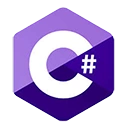Introduction
ASP.NET MVC is a web application framework developed by Microsoft for building dynamic, data-driven web applications. It follows the Model-View-Controller (MVC) architectural pattern, which separates an application into three interconnected components, making it easier to manage and scale. In this guide, we'll walk you through the basics of getting started with ASP.NET MVC, including key concepts and sample code to help you begin your web development journey.
Prerequisites
Before you dive into ASP.NET MVC development, make sure you have the following prerequisites:
- Visual Studio (or Visual Studio Code) installed on your computer. You can download the Community edition for free.
- The .NET Framework or .NET Core SDK, depending on the version of ASP.NET you want to use.
- A basic understanding of C# programming and web development concepts.
Understanding ASP.NET MVC
ASP.NET MVC is based on the MVC architectural pattern, which divides the application into the following components:
- Model: Represents the data and business logic of the application.
- View: Represents the user interface and presentation logic.
- Controller: Acts as an intermediary between the Model and the View, handling user input and coordinating the application's response.
Sample ASP.NET MVC Code
Below is a simplified example of ASP.NET MVC code that demonstrates the creation of a basic web application with a "Hello, ASP.NET MVC!" message.
ASP.NET MVC Code (HomeController.cs):
using System;
using System.Web.Mvc;
namespace HelloWorld.Controllers
{
public class HomeController : Controller
{
public ActionResult Index()
{
ViewBag.Message = "Hello, ASP.NET MVC!";
return View();
}
}
}
ASP.NET MVC View (Index.cshtml):
@{
ViewBag.Title = "Home Page";
}
<h2>@ViewBag.Message</h2>
Getting Started with ASP.NET MVC
To start with ASP.NET MVC, follow these steps:
- Create a new ASP.NET MVC project in Visual Studio.
- Understand the structure of an ASP.NET MVC application, including Models, Views, and Controllers.
- Define routes to map URLs to controller actions.
- Create Views using Razor syntax for dynamic HTML generation.
- Implement controller actions to handle user requests and return views.
Conclusion
ASP.NET MVC is a powerful web framework for building dynamic web applications. This guide provides a starting point for your journey into ASP.NET MVC development. As you continue to learn and explore, you can build more complex web applications, leverage libraries, and work on real-world projects to enhance your skills and create interactive, data-driven websites.

